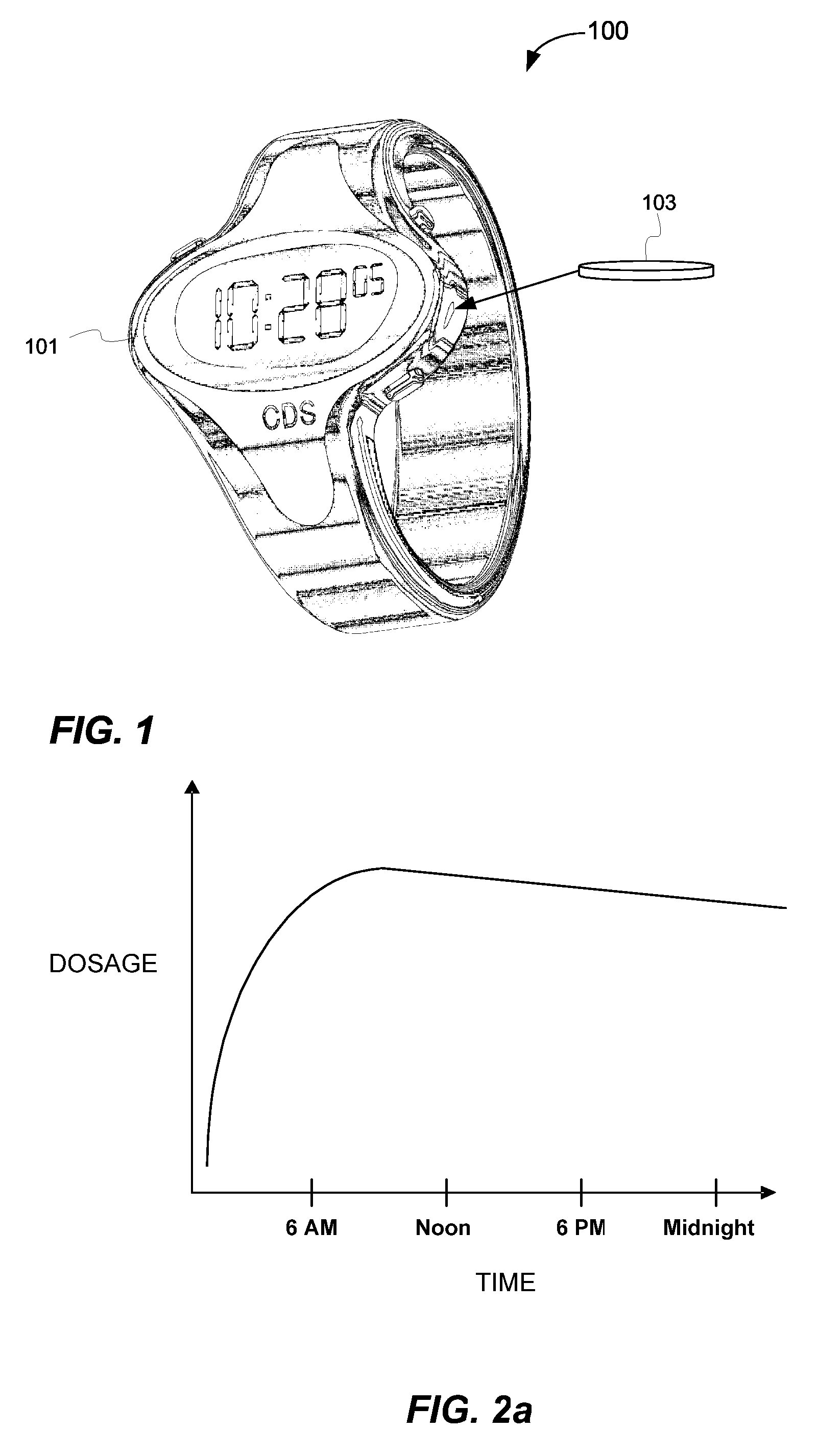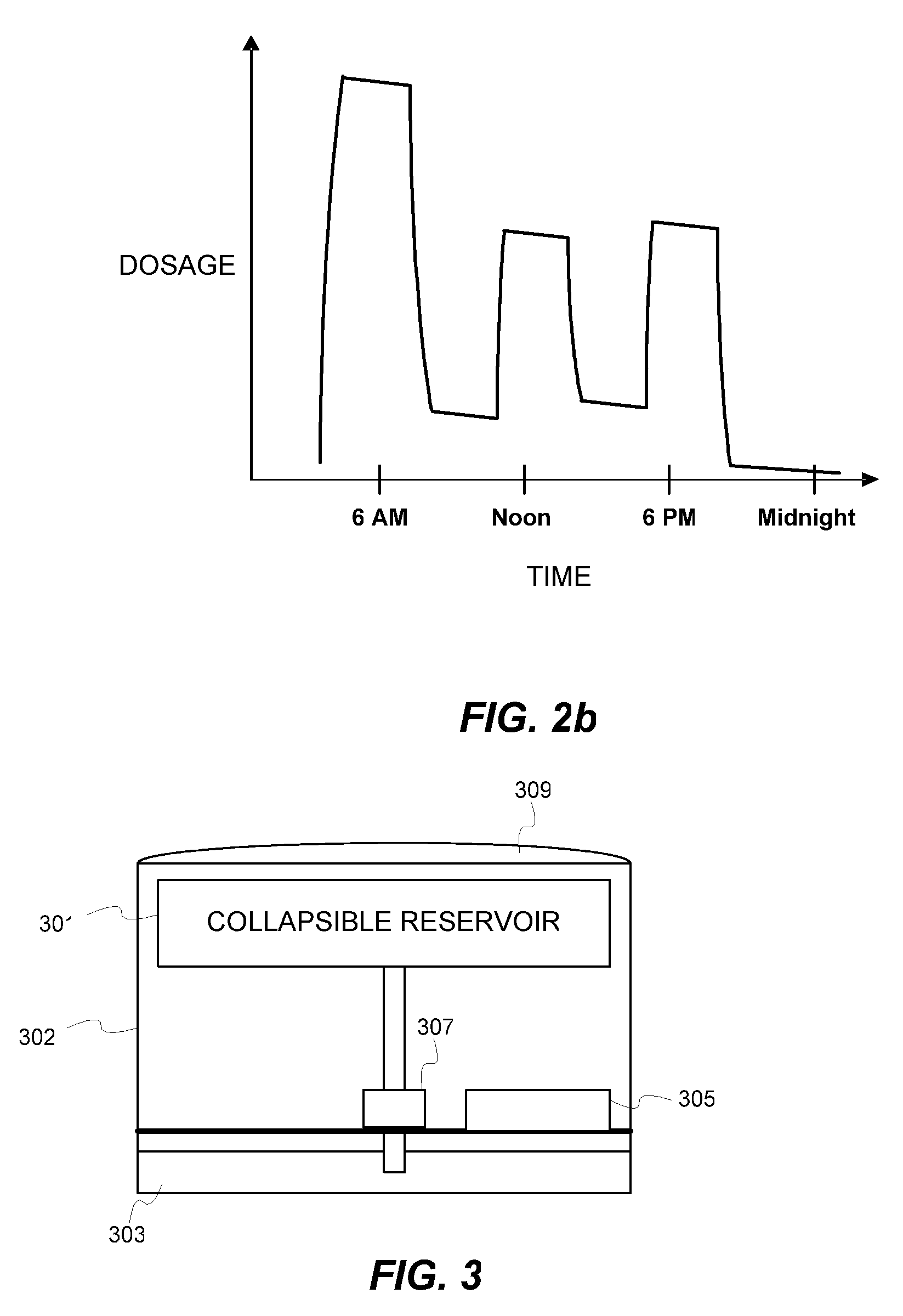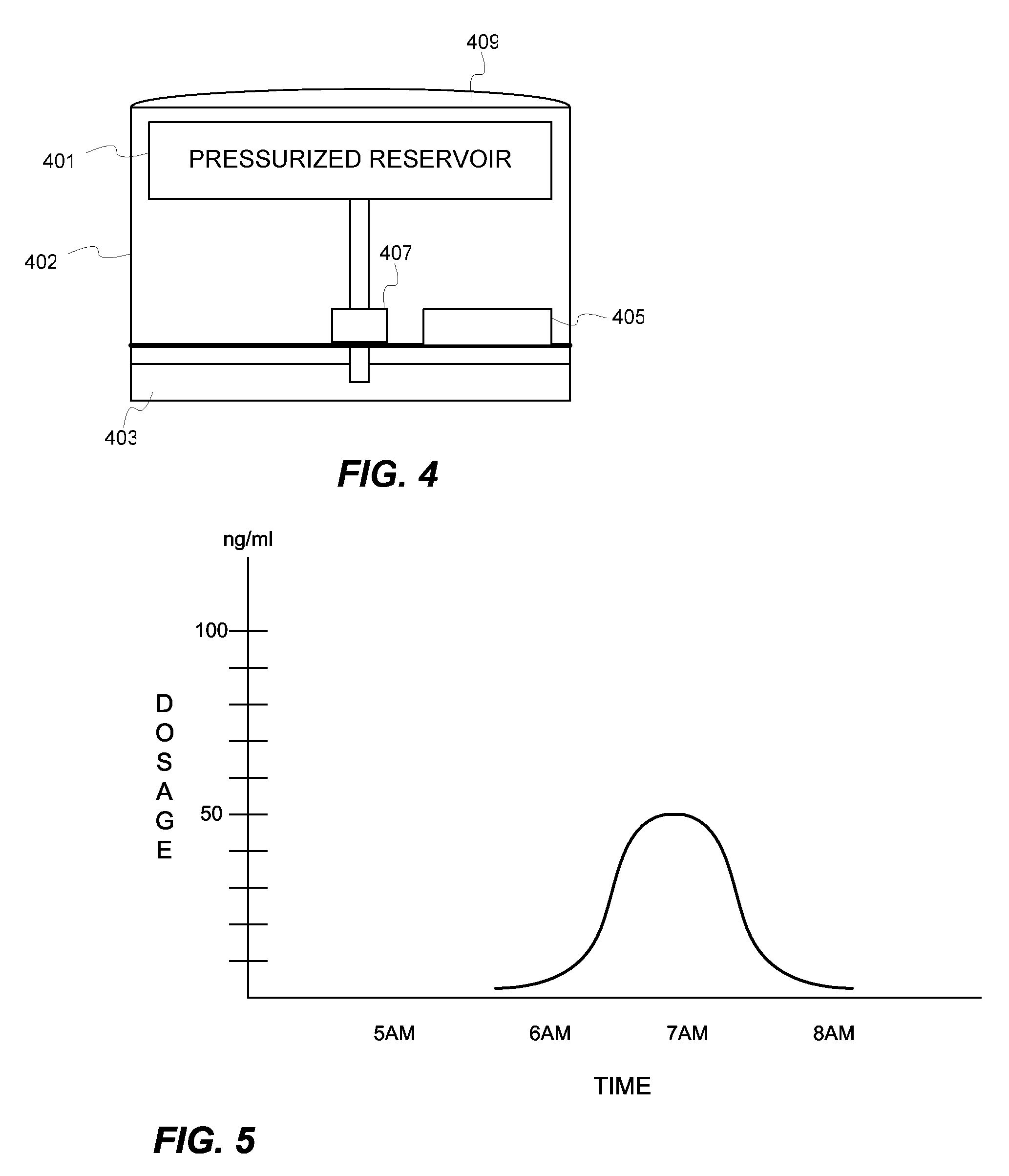Biosynchronous transdermal drug delivery
a biosynchronous, drug technology, applied in the direction of bandages, nitro compound active ingredients, therapy, etc., can solve the problems of inability to control the degradation of the coating or encapsulant, undetectable invasive administration, and inability to control the sustained release system, so as to minimize negative side effects and reduce the amount of drugs , the effect of increasing the effect of the dosing regimen
- Summary
- Abstract
- Description
- Claims
- Application Information
AI Technical Summary
Benefits of technology
Problems solved by technology
Method used
Image
Examples
example 2
b (COX-2 Inhibitor)
[0125] Like indomethacin, the primary adverse side effect of COX-2 inhibitors is gastrointestinal upset and bleeding. Therefore a transdermal arthritis patch would be a beneficial dosage form as opposed to oral tablets and capsules. Lower blood plasma concentrations of COX-2 inhibors delivered transdermally has been suggested as therapeutically equivalent to higher BPC obtained by oral dosing.
[0126] Thus, dosing could be optimized using the ChronoDose system. For example, pulsatile delivery should have blood plasma concentrations (BPC) as set forth below within the following ranges at the following times:
[0127] Peak 1 (Highest)
[0128] 5:00 am-9:00 am: BPC should be in the highest therapeutic range of between 50-175 ng / ml.
[0129] Peak 2 (Medium)
[0130] 12:00 pm to 8:00 pm: BPC should be in the medium therapeutic range of between 21-125 ng / ml.
[0131] Peak 3 (Highest)
[0132] 8:00 pm-11:00 pm: BPC should be in the highest therapeutic range of between 50 to 175 ng / ml...
PUM
| Property | Measurement | Unit |
|---|---|---|
| time | aaaaa | aaaaa |
| permeation | aaaaa | aaaaa |
| concentration | aaaaa | aaaaa |
Abstract
Description
Claims
Application Information
 Login to View More
Login to View More - R&D
- Intellectual Property
- Life Sciences
- Materials
- Tech Scout
- Unparalleled Data Quality
- Higher Quality Content
- 60% Fewer Hallucinations
Browse by: Latest US Patents, China's latest patents, Technical Efficacy Thesaurus, Application Domain, Technology Topic, Popular Technical Reports.
© 2025 PatSnap. All rights reserved.Legal|Privacy policy|Modern Slavery Act Transparency Statement|Sitemap|About US| Contact US: help@patsnap.com



